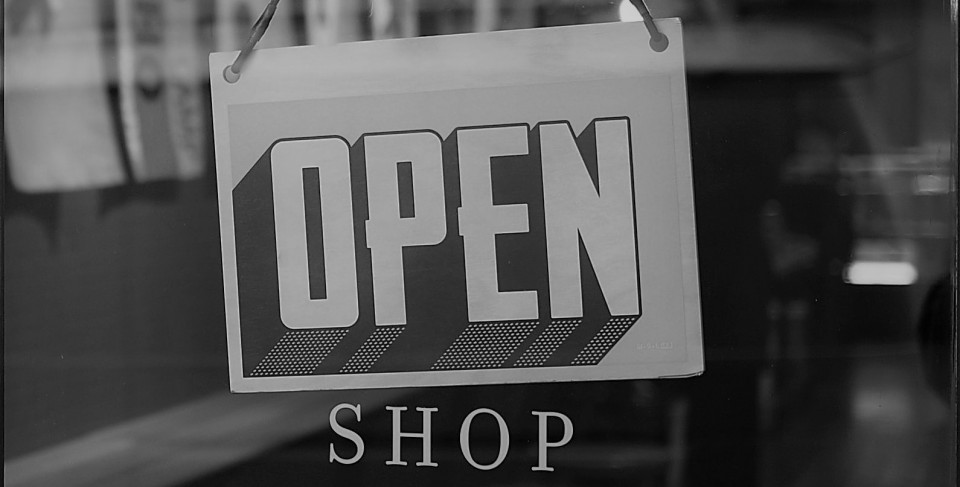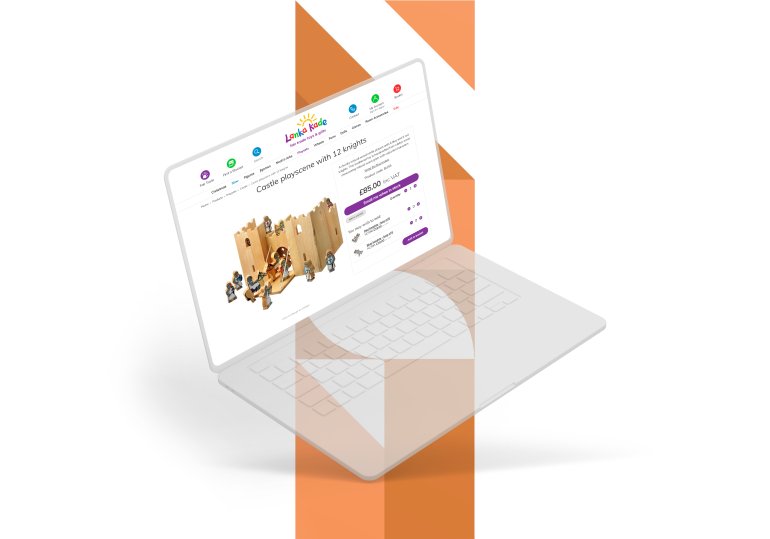How to approach Direct to Consumer
The good and the bad
Manufacturers and brand owners have long been selling goods directly to consumers (D2C) through mail order catalogues, online via eCommerce, from factory outlets and through store concessions. However, in the last ten years the opportunities and the options around D2C have accelerated, thanks in no small part to rapid technology innovation that’s made a multichannel and omnichannel strategy easier to define and implement.
What is D2C?
Essentially, selling direct to the consumer means “cutting out” the middleman, although a smart D2C strategy will not cut them out entirely but keep them “on side” and happy. As we all know, the traditional route to market is where a manufacturer will sell in bulk to a retailer or a wholesaler, and so it’s a big change for a firm used to selling in bulk to start selling individual items. The obvious benefit is the ability to achieve higher margins and sales growth - though that assumes you’re not taking sales away from your wholesale channel. In any case there’s a whole lot of extra work required to attract and fulfil each transaction and this needs to be well founded and sustainable for any long term gains to materialise.
INTUS by Iconography
We find that businesses wanting to sell to other businesses via eCommerce need to be approached with a different mindset than conventional B2C eCommerce projects. It's never a 'one size fits all', INTUS offers a service that's built to fit your needs.
Harvard Business Review
A unique advantage of DTC brands stems from their ability to have one-to-one relationships with their consumers while capturing valuable data that would be impossible to glean at traditional retail.
Featuring eCommerce, EPoS, Retail Management and CRM functionality IXO helps brands and manufacturers break free from restrictive and ineffective legacy software and sell products D2C across multiple channels faster, with reduced operational costs and increased productivity.
However, we know that opening up new channels and diversifying your route to market poses many challenges as well as rewards, and it’s these pros and cons that we aim to explore here. The indication is that D2C will only increase in popularity over the next decade, so read on to discover the benefits and challenges and the steps you need to take to evolve and improve your D2C proposition.
Advantages
Control
One of the major benefits of selling D2C is the control you have to create unique and bespoke experiences for your customers. Pricing, product displays and product information are all defined by you which ensures complete control over the way you want to present your brand. Owning your own eCommerce website and sales channel also means you can control your shipping and distribution process and run your own marketing campaigns.
Innovation
Selling directly to the consumer through your own website or physical locations provides plenty of options to innovate and explore new ideas. For example, you may wish to test a new product concept, gauge interest in unique styles or colourways or launch a new product that’s only available through your D2C channels. This freedom allows you to be agile and react quickly to market trends, bypassing the traditional routes to market through wholesalers and retailers. It’s a significant competitive advantage.
Data
Opening your own D2C channel enables you to collect primary customer data, an essential element in D2C. With the right supporting technology you can revolutionise the way your business operates and transform your operations from a product-led business to a data-driven, market-led business. Average order value, customer lifetime value, demographics and more are key metrics you can use to identify your most profitable and loyal customers, which you can then use to scale the whole of your business profitably and sustainably.
Challenges
Investment cost and risk
D2C will require investment in new infrastructure, systems, people and processes. And it’s competitive out there as firms chase an ever more mobile consumer. So there’s a risk of failure when going up against established retailers and successful eCommerce platforms like Amazon and eBay. You can start to minimise this risk when you invest in Iconography D2C eCommerce using the IXO platform.
Maintaining Retailer Confidence & Relationships
Every brand and manufacturer will have a unique relationship with their supply chain, wholesalers and retailers, so you need to ask your existing trade partners how they feel and what concerns they have. Inevitably most will worry about losing sales, competing against potentially lower prices and your discounting strategies. A factory outlet or concession D2C channel is likely to be of less concern to them than eCommerce, however, these may not be the right channels for your business. A fully featured and flexible IXO eCommerce website from Iconography that offers everyone in the supply chain a fair trading platform and that protects everyone’s interests will ensure everyone stays happy.
Managing Your Own Marketing, Advertising & Customer Service
A key challenge for manufacturers is marketing their new website or store and dealing with the other responsibilities that come with operating as a retailer. Customer service returns, payment gateways and more, are all key elements in a successful D2C strategy. While having full control of your brand and website is a massive plus point, expect to spend more time and money on developing new marketing campaigns and allocating budget for traditional advertising and advertising on platforms like social media and Google. Creating a unique D2C proposition that customers can only experience when they shop with you directly is essential to success.
Lanka Kade - A Direct to Consumer success story

Lanka Kade, a family run fair trade business, had just such an eCommerce requirement and came to Iconography to give them a fresh start. They were keen to access the D2C route to market as well as maintain all the complexities of customer management and order processing demanded by their existing B2B relationships.
With the IXO platform both B2C and B2B orders are placed on the same website, centralised and output to the Lanka Kade finance software. Both B2B and D2C customer management is also handled by IXO Commerce and facilitated by IXO’s real time inventory data. Before they came to us, Lanka Kade was working from a five year old website that had turned into a Frankenstein's monster. It was built up from lots of different software, all bolted together and creaking at the seams. Worse, they had been let down by their agency. The stakes were high and Iconography delivered.
Jason Munton, Lanka Kade
As a small business, the new website has really made a difference by streamlining a whole host of operations, which has freed up vital time to spend developing strong relationships with new and existing customers.
So, how do you do it?
Physical retail
Physical retail requires research and planning around location, staff, merchandising, stock deliveries and of course, in-store technology. Unified commerce software that updates from one database in real-time provides greater operational efficiency and cost savings vs implementing a patchwork of systems connected with unreliable integrations.

Choosing the right software system
Going D2C means you will be operating across multiple channels, dealing with the end-consumer as well as the usual wholesale B2B channels. This can become a complex network of back-end and front-end systems, so we recommend an all-in-one unified B2B and D2C platform like IXO Commerce that works across channels.
eCommerce
Launching an eCommerce website for customers to purchase directly is the fastest and most common approach to D2C. Investing in marketing and advertising is essential if you want to stand out among a competitive field.
Seamless D2C experiences will help you carve a unique position in the market and give your customers a reason to shop with you directly.
Inventory and EPoS
Selling directly to customers will generate a higher volume of individual orders, so accurate and real-time stock management is essential. A new D2C channel may require splitting stock between different warehouses, stores and concessions. You also need to consider how and where to process returns and how this may impact stock figures.
Concessions and pop-ups
If you’re unsure about the demand for customers buying directly or want to test different store formats and experiences, concessions and pop-ups might be the way to approach your new D2C project. The Iconography IXO platform will give you the flexibility to trial these kinds of approaches.

Logistics and fulfilment
A challenge for new D2C brands is operating as a retailer and managing the added responsibilities that comes with. New customer services, return and refund processes will need to be put in place before launching a new D2C channel. A key question to consider is where your D2C orders will be processed and shipped.
If you’re interested in exploring how our IXO commerce platform can take your retail business to the next level, then check out how some of our clients like Wool and wisdom, Lanka Kade and FootBalance successfully utilise D2C to increase their sales revenue. Alternatively contact a member of our team here.
We are Iconography
We don't just build an eCommerce website for our B2B customers; we work with you to understand your needs and produce a fully rounded solution.
Our innovative B2B clients challenge and trust us to deliver online solutions tailored to fit their existing business processes, providing a solid foundation and bridge to the future.
A team of seasoned eCommerce and omnichannel specialists, a dedicated group of digital artisans. We've been building profitable, high performing eCommerce and omnichannel businesses for our clients since 1997.
If you’re interested in exploring how our B2B solution can take you to the next level contact the team here.


Custom B2B eCommerce
We understand how to structure eCommerce for trade customers. INTUS Trade provides the specific stock, lead time and product information they need and the pricing, promotion, ordering and delivery options necessary to ensure all our trade sites are a useful resource which supports customers and adds real value.
The system is easy to use and works great with the complexities of furniture, which was a big factor for us in choosing a new system.
Michael Perrett, Roomes Furniture
Get in Touch